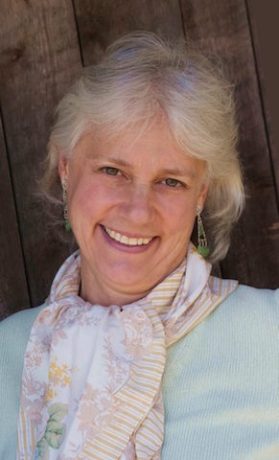By Patti Wood
The noise was deafening, slicing through the quiet morning like a giant buzz saw, shattering the calm of our tranquil neighborhood. In the span of just a few minutes, our sleepy street was transformed into an active deconstruction site, with giant machines clawing and scraping away the undergrowth of the now empty lot. Chain saws were started up and one by one, giant limbs were cut from a 150-year-old majestic spruce tree that had held court over our street for generations. The tree that defined our neighborhood was coming down.
When the charming home from the 1800s was torn down and the big tree remained, we hoped that perhaps the developer from out of town might actually see the value in preserving that tree – that he might find a way to squeeze in his two new houses without taking it down. Preserving mature trees on residential lots increases their attractiveness, value and marketability by providing aesthetic and other important values like shade and cooling, an incentive that now seems particularly prescient. Research shows an increase of 12% in value where trees are preserved. Smart developers who understand these values realize that it is in their best interest to prioritize the preservation of mature trees. But this was not the case on our street.
We watched in horror and sorrow as the limbs continued to fall from the hundred-foot tree. Men holding ropes wrapped around the trunk ensured that the top sections of the tree fell in the right direction. The man wielding the chain saw made precision cuts, and before long the tree had no branches, and nearby homes shuddered with each fall of the heavy trunk sections as they followed.
The limbs were dragged to the waiting chipper and then the remaining stump sat silently, waiting for the end to come as the stump grinder was pulled into place. The once stately tree had been successfully slain by men with their machines.
Well, we thought, at least there were some large oak trees along the property line, so it would not be a complete loss. But the man in the bucket in the sky with the buzzing saw swiveled around and began methodically cutting the limbs off the largest oak tree. Why was he cutting down the beautiful 70-year-old pin oak? It’s wasn’t in the way. It was a perfect specimen, rising 60 or so feet into the air. It was home to birds, squirrels and raccoons. Its leaves had just turned a gorgeous leather brown but hadn’t yet dropped to the ground.
One by one, every single tree on the property was denuded and summarily toppled to the ground where the smaller limbs were fed into the whining chipper and the large sections of trunk were grabbed by giant claws and lifted onto a flatbed truck.
After the last trees were gone and the chipper was towed away, a strange quiet settled over the neighborhood. Suddenly the sky was full of birds. Thousands of birds converged on the scene of the crime, swooping through the now empty space, flying from tree to tree on surrounding properties, landing and taking off in the open space and then repeating the pattern. This went on for more than an hour. I had never experienced this show of grief and loss by birds before, but apparently it is not unusual.
Habitat fragmentation is what this unfortunate loss is called. The ability of trees to capture CO2 and provide oxygen, improve and maintain the quality of water, soil, and air and to remove pollutants is well known, but the fragmentation of habitats is less understood by the public.
We hear about rain forests being leveled for monoculture plantations and primate habitats destroyed in the name of progress, but this was just typical real estate development, chopping up wildlife corridors into smaller fragments or patches. These corridors maintain the connectivity and functionality of ecosystems and its loss has enormously negative consequences for wildlife. Until the birds came, it was something none of us on our street had really considered as we were just mourning the loss of nature’s beauty, something that had made living on our street special. It clearly meant something more to our feathered co-inhabitants.
Two new houses will be built on the now cleared and subdivided lot, each one within a couple feet of each other and the adjacent homes. There will be barely enough room for a small patch of grass and some decorative shrubs once the driveways are constructed. The developer lives in a nearby, very upscale wooded community, where people love living with their lush tree canopy and their bird feeders.

